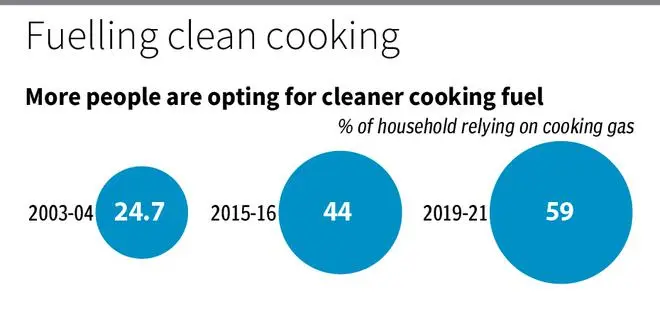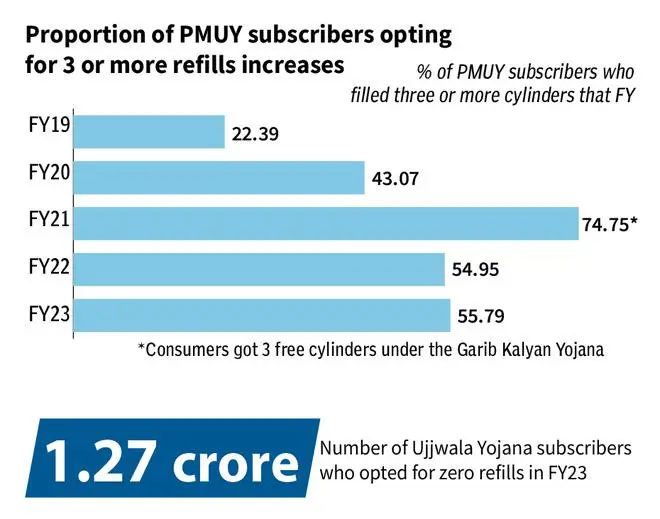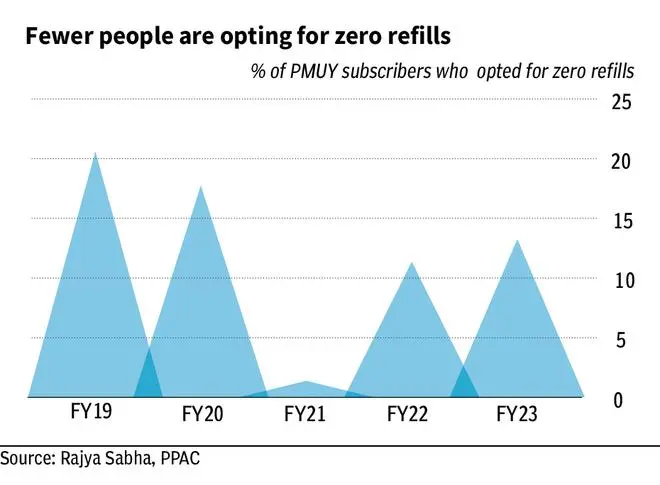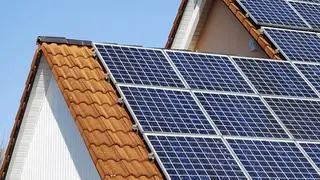The introduction of a ₹200-subsidy on LPG cylinders could aid more people to transition to using clean cooking fuel, suggests data. This is because, despite the steep price of cooking gas, India saw more households, including poverty-struck ones, shifting to liquid petroleum gas (LPG) for cooking.
LPG prices rose, but Ujjwala consumers relied on clean fuel
The subsidy was announced by Prime Minister Narendra Modi on August 29. “This reduction is in addition to the existing targeted subsidy of ₹200 per cylinder to PMUY households, which will continue. For Pradhan Mantri Ujjwala Yojana (PMUY) households, therefore, the effective price in Delhi after this reduction will be ₹703 per cylinder,” reads a statement from the Centre.
Rising demand
The National Family Health Survey data shows that in the 2019-21 period, 59 per cent of the total Indian households used LPG or natural gas for cooking. The proportion of this group was just 44 per cent in 2015-16 and 24.7 per cent in 2003-04.

This is despite the price of LPG rising steeply between 2015-16 and 2019-21. Data from the Indian Oil Corporation Ltd shows that a 14-kg cylinder of LPG cost ₹509.5 in Delhi on April 2016. On April 1, 2021, it was ₹809. On March 1, 2023, it was ₹1,103.
Even among the PMUY subscribers, the demand for LPG cylinders only increased. Data from the Ministry of Petroleum and Natural Gas shows that while 22.39 per cent of the total PMUY subscribers went for three or more cylinder refills in FY19, the proportion rose to 56 per cent in FY23.

During Covid times, in FY21, the proportion was exceptionally high — 75 per cent. That could have been because of the introduction of the Pradhan Mantri Garib Kalyan Yojana, where PMUY consumers got three free refills.
While the proportion dipped to 55 per cent in FY22, it went up in FY23. In May 2022, the Centre announced a Subsidy of ₹200 per cylinder (up to 12 cylinders) for PMUY consumers for FY23. Going by these numbers, the number of people opting for clean cooking fuel could increase in FY24, after the introduction of the new subsidy.

The Ministry data also shows that the proportion of PMUY consumers who opted for zero refills is also down, compared with pre-pandemic numbers.







Comments
Comments have to be in English, and in full sentences. They cannot be abusive or personal. Please abide by our community guidelines for posting your comments.
We have migrated to a new commenting platform. If you are already a registered user of TheHindu Businessline and logged in, you may continue to engage with our articles. If you do not have an account please register and login to post comments. Users can access their older comments by logging into their accounts on Vuukle.